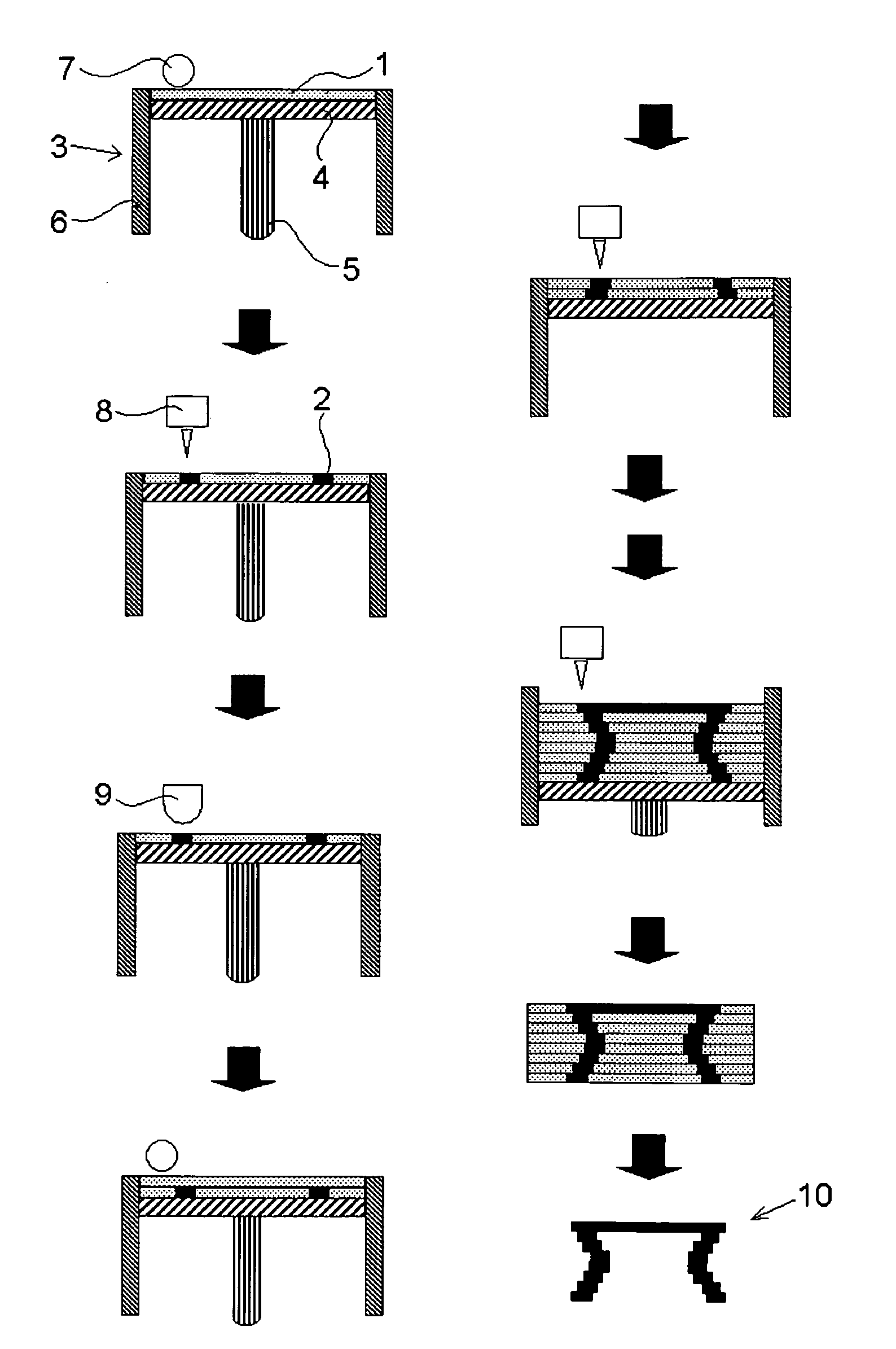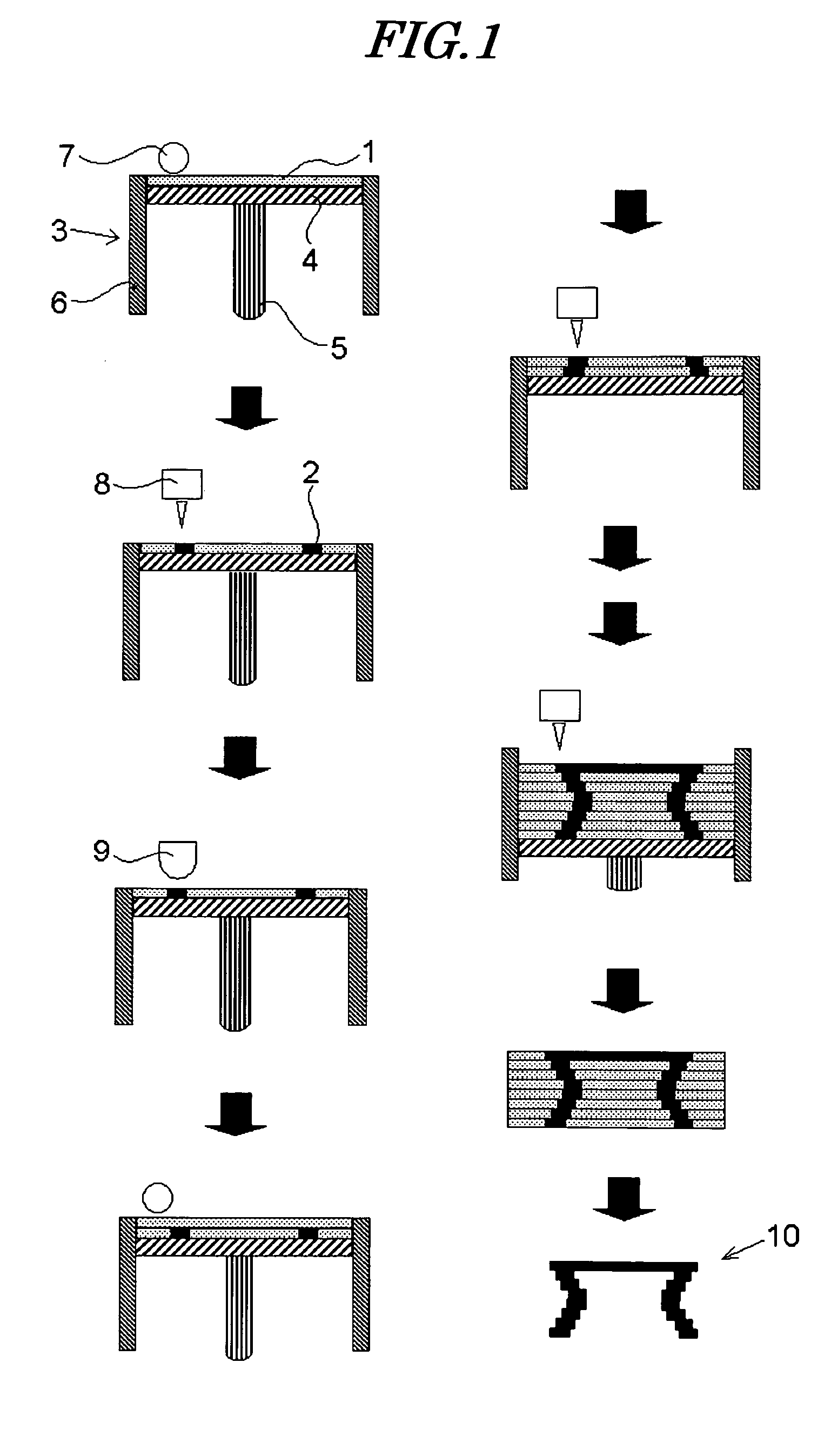Process for producing three-dimensional shaped article
a three-dimensional model and shaped technology, applied in the direction of additive manufacturing processes, solid and fluid additive manufacturing, electric/magnetic/electromagnetic heating, etc., can solve the problems of time and expense, the method cannot achieve a satisfactory level of properties (texture, color) for a model, and the three-dimensional model for which transparency is required cannot be obtained by the conventional method, etc., to achieve high gloss and transparency, the effect of high modeling speed
- Summary
- Abstract
- Description
- Claims
- Application Information
AI Technical Summary
Benefits of technology
Problems solved by technology
Method used
Image
Examples
example 1
[0240] Preparation of UV-Curing Binder ‘Colorless Binder 1’
Polymerizable compound: KAYARAD DPCA605.2gPolymerizable compound: HDDA14.8g(HDDA manufactured by Daicel UCB Co., Ltd.)Photopolymerization initiator: Irgacure 18500.6g
[0241] The above components were stirred and mixed to give colorless transparent binder 1 having a viscosity at 25° C. of about 20 mPa·s.
[0242] Preparation of UV-Curing Binder ‘White Binder 1’
Polymerizable compound: KAYARAD DPCA605.2gPolymerizable compound: HDDA14.8gPhotopolymerization initiator: Irgacure 18500.6gWhite pigment: titanium oxide3g
[0243] The above components were kneaded using a three roll mill to give white binder 1 having a viscosity at 25° C. of about 25 mPa·s.
[0244] Preparation of UV-Curing Binder ‘Yellow Binder 1’
Polymerizable compound: KAYARAD DPCA605.2gPolymerizable compound: HDDA14.8gPhotopolymerization initiator: Irgacure 18500.6gColorant: Y-10.8g
[0245] Y-1 above, and M-1 and C-1 below were as described in the ‘Best Mode for Carrying Out ...
example 2
[0256] A three-dimensional model was formed in the same manner as in Example 1 and evaluated except that as the powder material a phenolic resin was used instead of polymethyl methacrylate.
example 3
[0257] A three-dimensional model was formed in the same manner as in Example 1 and evaluated except that as the powder material polystyrene was used instead of polymethyl methacrylate.
PUM
| Property | Measurement | Unit |
|---|---|---|
| Particle size | aaaaa | aaaaa |
| Particle size | aaaaa | aaaaa |
| Thickness | aaaaa | aaaaa |
Abstract
Description
Claims
Application Information
 Login to View More
Login to View More - R&D
- Intellectual Property
- Life Sciences
- Materials
- Tech Scout
- Unparalleled Data Quality
- Higher Quality Content
- 60% Fewer Hallucinations
Browse by: Latest US Patents, China's latest patents, Technical Efficacy Thesaurus, Application Domain, Technology Topic, Popular Technical Reports.
© 2025 PatSnap. All rights reserved.Legal|Privacy policy|Modern Slavery Act Transparency Statement|Sitemap|About US| Contact US: help@patsnap.com



